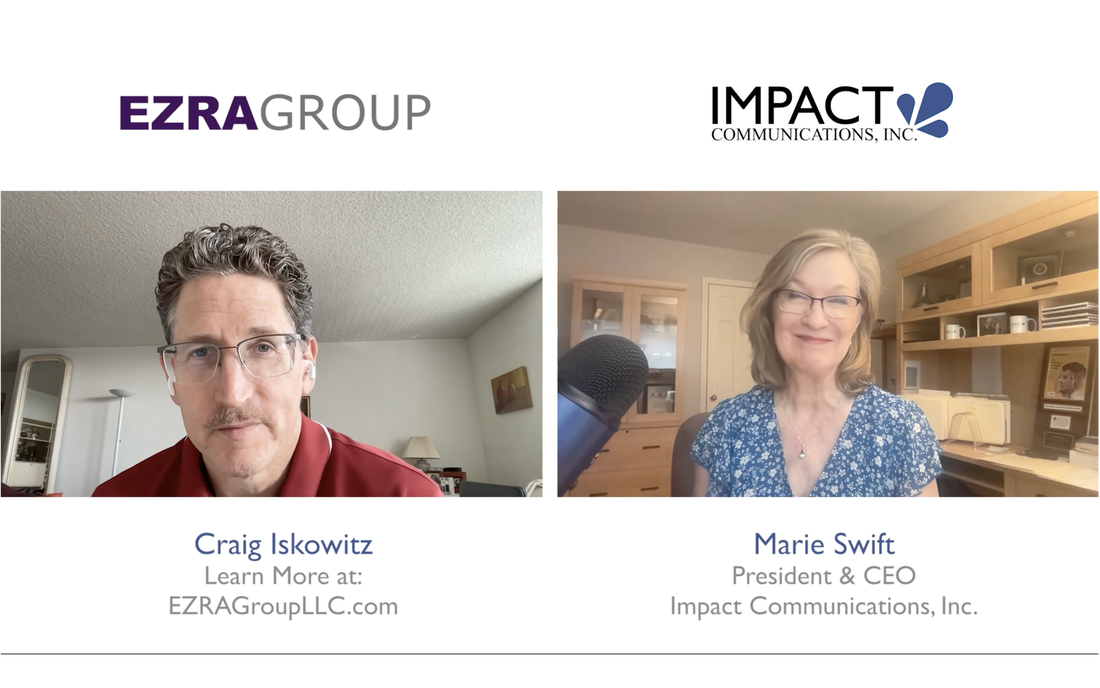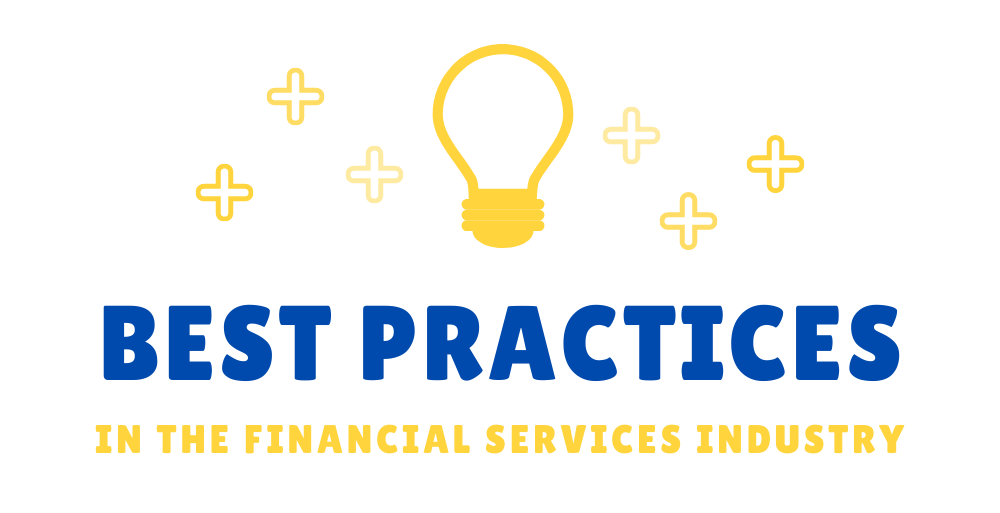|
In this Swift Chat, Marie Swift of Impact Communications speaks with Craig Iskowitz, Founder and CEO of Ezra Group, a boutique strategy consulting and research firm. The two discuss the new Ezra Group WealthTech Integration Score, a unique score for FinTech vendors to help thos in the financial services realm and wealth management business build better integrated tech stacks. Craig dives into how the score is determined and what that means for FinTech vendors as well as those in the profession who may be deciding how to select and use various applications.
To learn more about Craig, Ezra Group and the WealthTech Integration Score please visit: www.EzraGroupLLC.com
Very few vendors have detailed information about what they integrate with, and if they do, it's just a logo. They don't tell you exactly what data is sent back and forth. They don't talk about what the APIs are. They don't provide the data on their APIs (if there are APIs at all) and how to use them. So that's always an issue and as consultants we've gathered this data over the years, but most broker/dealers or large RIAs or other wealth management firms don't have access to that same data." Transcript of Conversation
Marie Swift: Welcome back to another Swift Chat. Today I'm joined by founder and CEO of the Ezra Group. His name is Craig Iskowitz. Many of you probably already know him. The Ezra Group does consulting and research work for enterprise wealth management firms, financial services organizations, and FinTech vendors. So, Craig, welcome to the show.
Craig Iskowitz: Marie, it is an honor to be here and talk to you. Swift: Great to see you again my friend. We were kicking around in Denton, Texas at T3. Always a good time. Pershing too. Iskowitz: T3. Pershing. All good. Swift: All good and more goodness to come this fall. But today we want to be talking about how FinTech has evolved, and it's been at a rapid pace and advisors, you know, they're using a lot of different platforms to produce results for their clients. One of the things that comes up a lot is about this topic of integration. And I know you have some thoughts on integration, but I'm just thinking about this whole debate that goes on about, oh, should we get the best tech stack and integrate everything so we can have best in breed versus all in one solution. So maybe we start with that. Where do you fall on that spectrum? Iskowitz: Yeah, that's a great question, Marie. So, you know, Ezra Group this is our 17th year in doing wealth management technology strategy and we get asked this question a lot and there's no right or wrong answer. It really all depends on the firm, what their capabilities are, what their goals are and how their current tech stack is. If all else is equal, there's no differences, then I would lean towards an all-in-one solution because integrating data across from applications is never an easy thing. However, more firms are building out their own technology teams that can support integrations across applications. So, their best of breed approaches is possible because you have the teams available to plug in the different applications. A joke we like to make is that if every vendor's integration worked half as well as they say it does, we'd be out of a job. Right. So, things really don't work as well as they promise. So, you want to really have a strong tech team there to support you. If you are going to go with the best breed approach. Ezra Group Integration Score Swift: I understand that you and your colleagues at the Ezra Group have been thinking about this a lot, and you've actually developed a way for these enterprise wealth management firms and tech vendors to think about integrations. Tell us about that. Iskowitz: Yeah, Marie so back to the first question, one of the reasons why it's difficult is there's not a lot of transparency around integrations. Vendors have varying degrees of information on their websites. Very few vendors have a lot of information or detailed information about what they integrate with and if they do, it's just a logo. They don't tell you exactly what data is sent back and forth. They don't talk about what the APIs are. They don't provide the data on their APIs if there are APIs at all and how to use them. So that's always an issue and as consultants we've gathered this data over the years, but most broker dealers or large RIAs or other wealth management firms don't have access to that same data. What we decided to do was come up with an integration score and we're scoring all the applications on the Kitces Ezra Advisor Tech Map, which I'm sure you've seen, anyone listening can download it on Kitces.com. Something I work on with Michael every month, we get together and go through the vendors and add and remove and modify that map. It's a sort of a gold standard in our industry for understanding the landscape of vendors. What we wanted to do was make it a little bit easier to pick between vendors and understand the strengths and weaknesses, so we came up with an integration score. This is something that each one will get a score out of 10 and it'll just be one more data point that broker dealers and other wealth management firms can use when selecting vendors. Swift: Interesting. So, I understand the why, because it's not transparent. It's something that advisors and the firms that support advisors need to understand. And so the cause, the reason that you did this is pretty clear, but how did you come up with the methodology? I get the ranking, but how, how do you come up with that? Iskowitz: It's something we've spent the last six months working on. We wanted to come up with something that was relatively straightforward, easy to understand, but capable of providing value to anyone who was looking at it. I think we started out with six different categories, and we collapsed it down to three breadth, depth and technical capabilities slash security. So, breath is just how many you got? How many integrations do you have among the 330 applications in the advisor tech landscape? How many do you integrate with now? We lowered the weight. Each one of these areas has a weighting. Breadth is only 15% because we didn't want people gaming the system and building lots of very simple integrations that don't provide a lot of value but would show up on the score. So, breadth is only 15% of the score. The next level is the technical capabilities and security is 25%. That goes into how your integration is documented. Do you have it on your website? Because one of the things we're trying to promote here is transparency. We want the vendors to put this information on their website so anybody can access it, whether you're a client, whether you're a partner, whether you're a consultant, whoever you are you can find that information available. So, do you have the available documentation available? Are your APIs publicly available? Can we access them? Do you have a sandbox for developers? Do you have tools for developers? What are your security protocols? What tools are you using for security and authentication? Those are all important when dealing with APIs or integrations and we want to bring that to the forefront. So that's 25% of the score. So, then we have 15 plus 25 is 40%. The other 60% is Depth. We want depth to be the strongest category, but that's how many of the key applications you work with, and we came up with the top 35 or top 40 of the most popular applications that everyone's using. You really must want to integrate with those, and you must do it at a lower level, not just a single sign on. We have a rating for if it's only doing one way. So, a lot of vendors will only take data or will only send data. What we're trying to encourage is bidirectional data transfer. If I'm a portfolio management platform and I'm integrating with a planning tool, I want to be able to bring in their retirement probabilities into my tool, but also be able to send account values as an example. So, that's an example of a bidirectional integration capability. So those vendors that have deeper capabilities across more of the core applications will score better on the depth part of the score, which is 60%. Benefits of the Integration Score Swift: I'm beginning to understand how you came up with the methodology, the why it seems like this is going to help a lot of the CTOs and FinTech companies understand where they need to improve and also how to work better together. Iskowitz: Oh, sure. When you talk about CTOs, so wealth management firms CTOs, this is going to be another arrow in their quiver they can use when looking at vendors. So, when they're making selections they can say, well we've got two vendors their both pretty close, oh, well this one's got a better integration score let's go with that one because that makes it easier for us to work with them going forward. It's something that clients will be able to understand and we've done all this work already for them, so they don't have to. We're saving them the time of doing this deep dive into the integration capabilities of vendors and most wealth management firms even the smallest RIAs have at least three or four vendors of applications. Very few go with the all in one route anymore. Even if they do use an all in one and on the Kitces Ezra map, all in one just means portfolio management, billing reporting and maybe CRM, but it's not everything. You can still use an all in one and then add in a tax tool and a client meeting tool and a digital marketing tool and a reporting tool. There's lots of other things you can bring in and understanding how those applications are capable when it comes to integration is important. So, it's going to help them. What it will do is the FinTech application providers, as you mentioned, they're going to hopefully if this takes off, which we hope it does, it will encourage the FinTech vendors to A) be more transparent, provide the information on their websites in a detailed level and B) offer a wider range of integrations with at least the core applications, what we've found to be the most popular applications across the different categories, and offer deeper integrations that are more bidirectional and also on their APIs, we're encouraging them to document them well, provide a sandbox for developers and use the latest authentication and security software on their APIs to make it secure. Swift: That all sounds great. How will people know if I'm searching for, I want to build my own stack. How will I know that I've got a great integration solution or a vendor? Iskowitz: The scores are going to be put out. They'll be on our website, EzraGroupLLC.com. You'll be able to find them there and you can search by category or by vendor and look at their score. We'll also be published on Kitces.com which has not only the Kitces Ezra advisory tech map, which everyone's familiar with, but they have built out an advisor tech directory, which is a much more robust database of all the vendors and not only the primary category. So, on the advisor tech map, it's just primary categories. We can't duplicate logos on that map for every category. For example, like an Envestnet, they have proposal generation with fully rebalancing trading, performance reporting, billing, client portal, but we only have Envestnet logo there once. But in the advisor tech directory, all of those secondary categories are listed. So, if you look for proposal generation, you'll find Envestnet and all the other companies that have proposal generation, not just a couple of firms that are only doing proposal generation, which are on the map. Our scoring will appear in that directory as well. So, when you're doing a criteria search, you can say, bring me all the all in one platforms and only those that have an integration score of eight or higher as an example. That will filter those out for you or if you show all of them, you can kind of look through and see, oh, he's got a seven, but they have an eight so that's a little bit better I'm going to go with the eight. So that’s where the data will be available. Continuing to Perfect the Integration Score Swift: It's kind of like when I go looking for a hotel, I want to see what the trip advisor rating is, what other people are saying and what the hotel itself is saying. So fantastic. Will there be any kind of like badge or an emblem to make it real easy to see the best of the breed? Iskowitz: Absolutely. Back to something you just mentioned, our next phase of this is calling wealth management firms that have used these integrations, interviewing them and finding out how they did. So that'd be more of a TripAdvisor type of thing, but we're not going to let them just provide it randomly we're going to go out and get that data, because we think it's more important. You don’t want the vendors priming the pump and saying, call Craig call Craig with the clients who it’s been working out well. So, we're going to reach out to certain clients who we know are using different integrations and ask them, how did it work? Was it easy? What issues did you have? So that'll also go into the score. That's going to be the next phase. Probably in the next six months we'll be able to do that, but there will be a badge on our website. We're breaking up the scores, from 8 to 10 is going to be a blue color and that is a superior rating. So, your integrations are rated as superior and there'll be a badge that you can then put on your website. So, a vendor can put that superior Ezra Group Integration Score badge on their website as sort of a mark of certification that we've validated. Yes, they have superior integrations. The next level down is excellent. If you have a score of 6 to 8 you're excellent. There's a badge for that as well. The badges won't appear on the Kitces site right away, they'll be in the directory probably by the end of the year. They just got some stuff to do on their site technically, but the badges will appear on our site and they'll be available for FinTech vendors to download and post on their own sites assuming they actually got that badge. Swift: Well, fantastic. I know anybody who follows you and your podcast and your blog, and also Kitces and his podcast and blog that they'll be the first to know when this is available. What's your timeline? When are we going to start seeing some of this? Iskowitz: We are press releasing our Ezra Group Integration Score on August 16th so that's when it'll be live, it'll be on our website EzraGroupLLC.com. Starting on August 16th there'll be a page on our site you can access to view the scores and I'm not sure when it'll be on the Kitces advisor tech directory might be next month, but that'll go out there. And what I would recommend everyone do is go to our website EzraGroupLLC.com scroll to the bottom of the homepage and sign up for our newsletter. You'll get once a month an email with any updates that are going on with Ezra Group as well as our integration score. So you can keep up to date with how we're changing things, maybe new companies we're adding or any updates to the integration score. Swift: All very exciting. So final words of wisdom. Where are we going to see you next? Iskowitz: Oh, good question. So, it's August now. I think the next conference is Future Proof September 11th to the 14th in Huntington beach, California. Swift: The festival, the who's who of festival goers in the financial services industry. Iskowitz: It's going to be an interesting event. It's all outdoors. Swift: Yeah. I can't go this year. I'm totally bummed. I have to go do something, a family wedding, and a trip with my mom, but maybe next year you can tell me all about it. Iskowitz: I'll be tweeting about it. Swift: Yeah. You know, speaking of social media, I heard that you're like the social media king. When it comes to having a secret to getting eyeball engagement. Iskowitz: I don’t know about that. I try hard I've got some people helping me so we're a team here and we do everything together. We do a good job keeping our followers up to date on what we're doing and they're trying to put news and information and opinions out about the industry. So yeah, we do our best to do a good job. Swift: We had a contest all in good fun with proceeds to charity at the T3 event, which was in May in Texas and coming up March, I believe middle of March T3, 2023. I'm sure we will be there tweeting up a storm. You and I posting on LinkedIn and also doing some videos together. Craig, it was great spending time with you. Thanks for being here. Iskowitz: Thanks Marie, always a pleasure. Comments are closed.
|
About
|
|
Stay Connected
|
Phone: 913-649-5009
©2023 Impact Communications, Inc.
|





